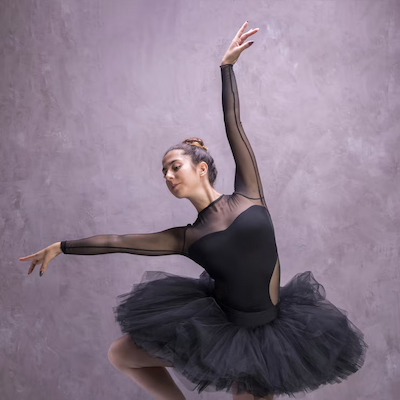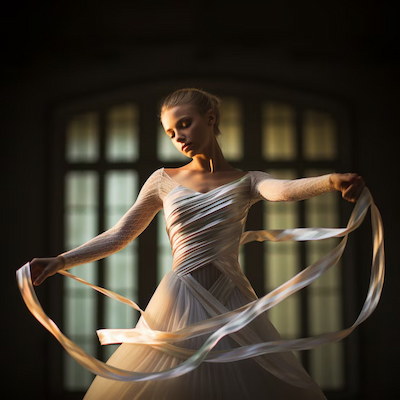
Classical dance is one of the most refined and structured forms of artistic expression, with a rich history rooted in centuries of tradition. From the royal courts of Europe to the grand stages of today’s theaters, classical dance has evolved to reflect the social, cultural, and artistic transformations of each era. It is a discipline that combines physical rigor with emotional depth, creating performances that are both technically impressive and profoundly moving.
This article explores the origins, evolution, and cultural significance of classical dance. Through a look at its various styles, techniques, and influence on society, we gain a deeper appreciation for this timeless art form. Whether you are a dancer, a student, or simply curious about the arts, understanding the history of classical dance opens the door to a world of beauty, discipline, and cultural connection.
How Classical Dance Styles Work
Classical dance styles operate within systems of techniques and traditions developed over centuries. Each style carries characteristics, movements, and expressions that reflect the culture and time in which it was created. For example, classical ballet is known for its emphasis on strict technique, specific foot positions, and the use of pointe shoes—requiring years of disciplined training and resulting in performances that are both technical and artistic.
In addition to ballet, there are other classical dance styles such as contemporary dance, which incorporates elements of improvisation and movement freedom. This flexibility allows dancers to express their emotions more openly while still being rooted in classical technique. Classical folk dances from various cultures bring history and heritage to life, using movements that are often passed down through generations.
Another fundamental aspect is the music that accompanies the dance. Classical dance is often closely tied to classical music, with composers like Tchaikovsky and Stravinsky creating works that became synonymous with ballet performances. The interaction between music and dance is crucial, as music guides the movement and narrative presented on stage. This highlights the synergy between different art forms and how they complement each other.
Finally, classical dance reflects social and cultural changes over time. The evolution of classical dance styles can be seen as a mirror of transformations in society—from aristocracy to contemporary expressions that challenge norms and expectations. This adaptability allows classical dance to continue resonating with new generations, keeping its relevance and cultural importance alive.

Advantages of Classical Dance in Culture
Classical dance offers many advantages that go beyond aesthetics and performance. One of the main benefits is the promotion of discipline and focus. The rigorous training needed to master classical dance techniques teaches dancers the value of dedication and concentration. These skills are transferable to other areas of life, such as academics and careers, where discipline is essential for success.
Another significant benefit is the development of artistic expression. Dance allows individuals to communicate in ways that words often cannot. Through movement, dancers can convey complex emotions and tell stories that resonate with audiences. This form of expression is vital in a society where communication is often superficial and fragmented.
Classical dance also plays an important role in cultural preservation. By transmitting traditions and stories through movement, it helps keep cultural roots alive across communities worldwide. This is especially important in a globalized world where cultures can be lost or diluted. Classical dance serves as a vehicle for cultural education and awareness, promoting respect and appreciation for diversity.
Lastly, classical dance supports physical and mental health. Regular practice improves strength, flexibility, and endurance, while also supporting cardiovascular health. Mentally, dance can be therapeutic, helping to reduce stress and anxiety. The combination of physical and emotional benefits makes classical dance a fulfilling activity with lasting impact on practitioners’ lives.
How the History of Classical Dance Influences Society
The history of classical dance has a profound impact on modern society, reflecting and shaping cultural norms over time. With roots in European aristocracy, classical dance initially served as entertainment for the elite, but quickly spread to the public, democratizing the art form and making it accessible to broader audiences. This transition helped establish classical dance as a legitimate and respected art form for all social classes.
Classical dance also influences fashion and aesthetics. Ballet costumes, for example, often set trends that appear in contemporary fashion. Dancewear—with its elegant design and functionality—inspires designers to incorporate dance elements into their collections. This shows how classical dance is not only an expressive art form, but also a catalyst for creativity in other industries.
Additionally, classical dance has the power to bring people together. Performances often draw diverse audiences, creating spaces where different cultures and backgrounds can meet and connect. This unifying ability is crucial in an increasingly polarized world, where art can serve as a tool for promoting understanding and empathy.
Finally, the history of classical dance also challenges social and cultural norms. Over time, it has evolved to include a variety of styles and interpretations that question traditional expectations. This evolution not only enriches how dance is perceived, but also opens space for new voices and stories that were once marginalized. Classical dance is therefore not just a reflection of society, but also an agent of social change.

Did You Enjoy Learning About the History of Classical Dance?
The history of classical dance is a fascinating field that reveals much about the evolution of art and culture. From its origins in European courts to its contemporary impact on society, classical dance continues to be a rich and dynamic form of expression. Every movement and every performance is a testament to human creativity, discipline, and the timeless desire to communicate through the body.
More than just a performing art, classical dance is a living archive of human emotion, history, and storytelling. Its techniques, refined over centuries, are passed from generation to generation, preserving cultural identities while continuously evolving. Each pirouette, leap, or graceful gesture is charged with meaning, emotion, and artistry—blending tradition with personal interpretation in a way that few art forms can.
If you found yourself drawn to classical dance, there are countless paths to explore. You can delve into its history, study the styles of legendary dancers and choreographers, attend live performances in theaters or festivals, or even try a class yourself. Whether you’re an aspiring artist, a curious observer, or someone seeking a deeper cultural connection, classical dance offers a world of inspiration and transformation.
Engaging with classical dance is not just about appreciating beauty—it’s about connecting with something universal. It reminds us of the power of movement to transcend language, to unite people across cultures, and to express the deepest parts of our humanity. Don’t miss the chance to experience this timeless art form for yourself. It may awaken something profound within you—something that words alone could never capture.
Frequently Asked Questions
What is the history of classical dance?
The history of classical dance tells how dance began and developed over time, with roots in various cultures. It’s a fascinating journey!
What are the origins of classical dance?
The origins of classical dance trace back to Italy and France in the 15th century. The French court helped popularize it, spreading it around the world.
How has classical dance evolved?
Classical dance has evolved by incorporating new styles and techniques over time. Technology and music have also influenced this evolution. You’ll see how it all fits together!
What is the cultural impact of classical dance?
Classical dance has a huge cultural impact. It inspires other arts like theater and music. You can still feel the emotion it brings today.
Why is it important to understand the history of classical dance?
Understanding the history of classical dance helps you better appreciate performances and shows how different cultures influence one another. It’s a way to connect with the world.
What makes classical dance timeless?
Classical dance is timeless because it blends tradition, emotion, and technique in a way that continues to move and inspire people across generations. Its beauty and discipline transcend time and culture.

